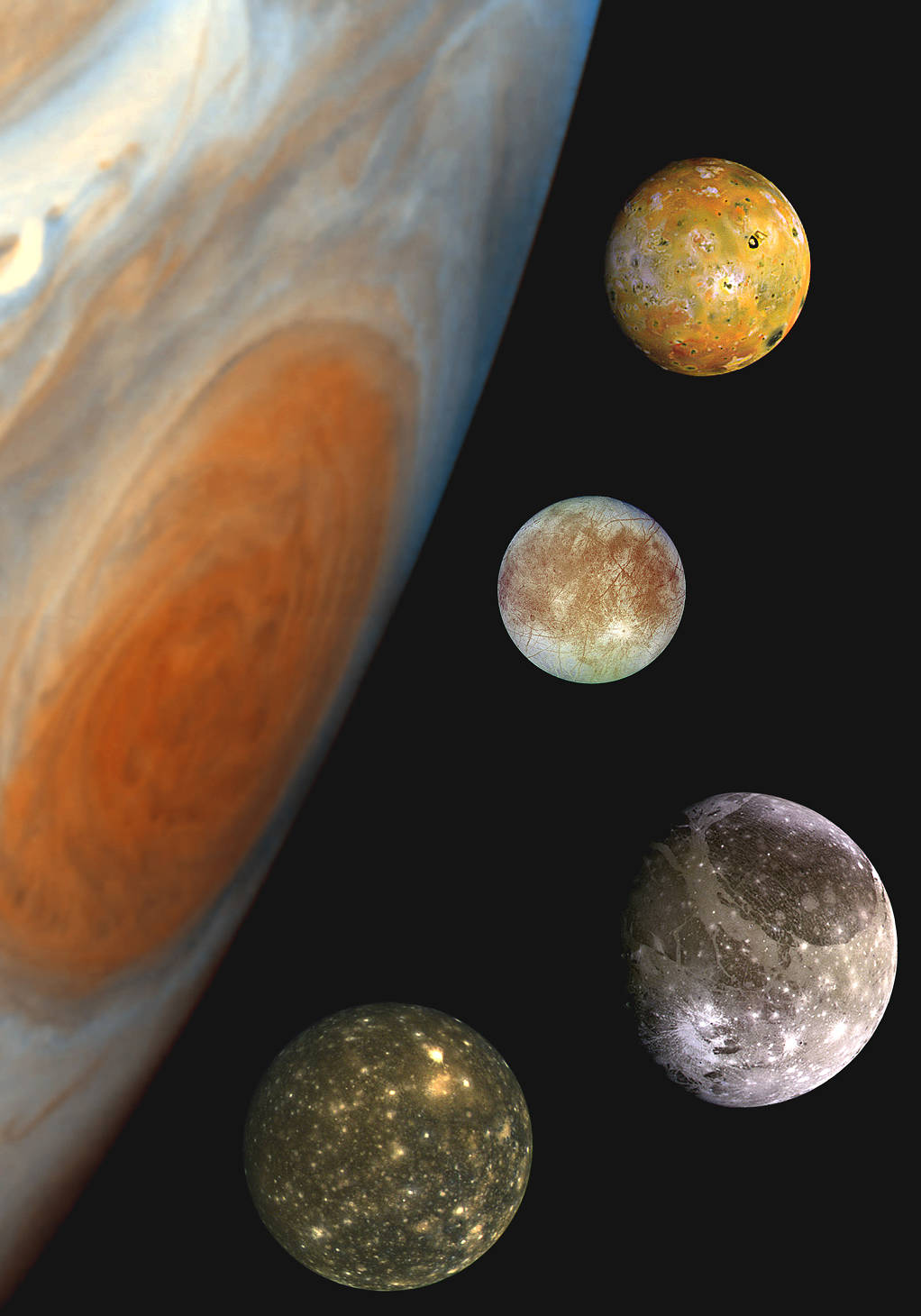>> Pre-Workshop in September 2021 
Credit: NASA
Overview The Jupiter system is the most massive secondary system in the Solar System. Its formation and early evolution had a profound influence on the sculpting of the architecture of the solar system and on the delivery or water and other chemical species to the inner planets. Its satellite system offers a broad diversity of objects whose inventory and characterization are still incomplete. Despite eight years of intensive exploration by NASA’s Galileo mission, the formation scenarios, geology, geochemistry, geophysics and potential habitability of the four Galilean satellites continue to challenge our understanding. These “big questions” have motivated a “new wave” of space missions to the Jupiter system which are currently flying (Juno) or in development (JUICE, Europa Clipper, LUCY). The science of the Jovian satellites, among which the four Galileans offer a diverse set of analogs to terrestrial planets, is as multi- and interdisciplinary as the study of our Earth-Moon system. To understand their uniqueness and diversity and unravel the mysteries of their origins, workings, mutual couplings and habitability, one must call in an extremely broad spectrum of geoscience and astrophysics disciplines: geology, cosmo- and geochemistry, geophysics, space plasma physics, ocean and atmosphere sciences, astrobiology, astrometry, astrodynamics… Seventeen years after the end of the Galileo mission, while Juno is on its way to an extended mission that will address important Jupiter and satellite science questions, and just a decade before a new wave of space missions (Lucy, JUICE, Europa Clipper) reaches the Jupiter system, holding this workshop on the Jovian satellites in the 2021-2022 time frame will ideally serve the preparation of the analysis of the new harvest of observations these missions will return, and help establish the science rationale for new Jupiter system mission initiatives, particularly in China where a mission aiming at assembling the puzzle of the scenario of the formation of the Jupiter system is currently under study, and in the U.S. where a mission focusing on Io, IVO, is currently considered. Objectives
- Explore the Jovian satellite system, including all moons and small bodies (Galilean satellites, inner regular satellites, irregular satellites and Jovian Trojans) and review our current understanding of their formation, evolution, workings, and of the possible emergence of habitable moons among them;
- Review the way these key questions will be partly addressed by space missions to the Jupiter system currently in flight (Juno) and in development (JUICE, Europa Clipper, LUCY), and identify the science base for new mission initiatives that will further address these open questions.
- Provide a high-level reference book for the scientists who prepare these missions and will analyze their observations in the coming two decades.
ProductObjectives of the book: (a) Produce the first recent comprehensive book on the Jovian satellite system as a whole; (b) review our current understanding of its formation, evolution and workings; (c) produce a tool to help scientists involved in the next wave of Jupiter missions prepare their observations and scientific analysis tools; (d) in addition, address a broader audience by presenting “hot topics” of Jovian satellites science of relevance to other scientific fields. Readership: the book will be structured and written to address two main categories of readers: (a) planetary scientists from all fields preparing to take part in future space-based, Earth-based, modelling and theoretical studies of the Jovian satellites; (b) a broader community from geosciences, astrophysics and astrobiology interested to better understand the implications of discoveries and lessons learnt in the Jupiter system for their own field. CONVENERS
| Michel Blanc |
NSSC, CAS, China |
| Scott Bolton |
NSSC, CAS, China |
| Tomoki Kimura |
Tokyo University, Japan |
| Li Lei |
NSSC, CAS, China |
| Kathleen Mandt |
JHU-APL, USA
|
| Christophe Sotin |
Caltech & LPG, Univ. Nantes, France |
| Sun Daoyuan |
USTC, China |
| Tim van Hoolst |
ROB, Belgium |
Participants List
TBD
Directions to the hotel and ISSI-BJ (pdf)
|